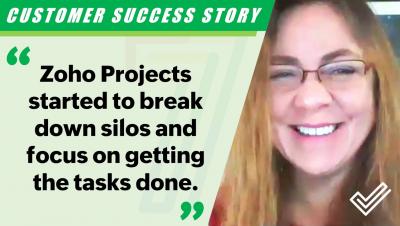Teams | Collaboration | Customer Service | Project Management
Zoho Projects
Change Management: Tools for Product Development
Change management is a discipline that guides organizational improvement. It results in a permanent change as a result of observable shifts in behavior. It ensures that your organization learns and improves in a thorough, orderly and sustainable manner. Successful improvement projects require that individuals and groups are aligned, that they share a common vision, that they know how they will define success, and have a path to achieve it. Change management has three aspects.
Five Product Development Pitfalls - And How to Avoid Them
Through decades of consulting for companies such as Apple, Bose, Roche, IBM, and others, we at TCGen Inc. have seen our share of product development snafus. We tend to see many of the same problems across organizations and across industries. Most of them are simple, all of them avoidable, and yet their effects are significant. Below are five of the most common product development pitfalls we have seen — and how to avoid them.
Project Management in the Gig Economy. What it Takes for Successful Collaboration Among Distributed Workers
Over the years, the rapid emergence of gig economy platforms have created diverse job opportunities by connecting freelancers with businesses that favour a pay-per-task basis. However, being able to pick up temporary job arrangements has been both boon and bane. In the Asia Pacific, 84% of hiring managers outsource to freelancers.
Third-party integrations: simplify your work by connecting more apps to Zoho Projects
Most businesses run on a variety of applications and it’s essential for productivity and efficiency that such applications communicate with each other. If tools are rigid and fail to talk to each other, work can become quite cumbersome. Last year, we asked our users what add-ons you’d like to see in the future for Zoho Projects. Many of you sent in your requests, and we heard you loud and clear!
Improve workplace relationships using neuroscience
Whether you’re a software developer, a marketer, or the CEO of your own company, collaborating with people is invariably a part of your job description. Many of us have worked with people we don’t agree with or sat through meetings which could have gone better. We may have also observed minor misunderstandings between people, that could have been solved then and there, but rather linger on and have a negative impact on the relationship.
The Project Management Guide for Remote Teams
The end of 2019 was also the beginning of something catastrophic: the COVID-19 pandemic. The global pandemic has been responsible for threatening the economy and triggering debates concerning the second recession of the millennium, and for many organizations, it has also resulted in the immediate shift to remote work.
Working from Home: The Past, Present and Future
For the last five years, I have worked primarily from home. I also worked from home in the 1990s, attitudes and technology have changed a lot in those 25 years. Now, in response to COVID-19, working from home will be different again in the future. This article explores these past, present and future eras of remote work.
From classrooms to meeting rooms: a project management tool for every business
Gone are the days when manufacturing industries, construction and software companies were the only major consumers of project management tools. Every industry has slowly evolved to understand the importance of using a project management methodology to handle all their tasks systemically. ITS, a dental college in Northern India has started managing all their academic activities using Zoho Projects, our project management tool.
Crisis management during COVID-19: How being agile can help save your business
Major crises like our current situation is a real-life test of agility for many of us. As we look around at governments grappling with mitigation and businesses of every size pivoting their strategies, we see all of them dovetail back to this mantra: “Responding to change over following a plan.” While everything may feel hopeless at times, there are also inspiring examples of people and organizations who have shown resourcefulness and resiliency in their responses.











